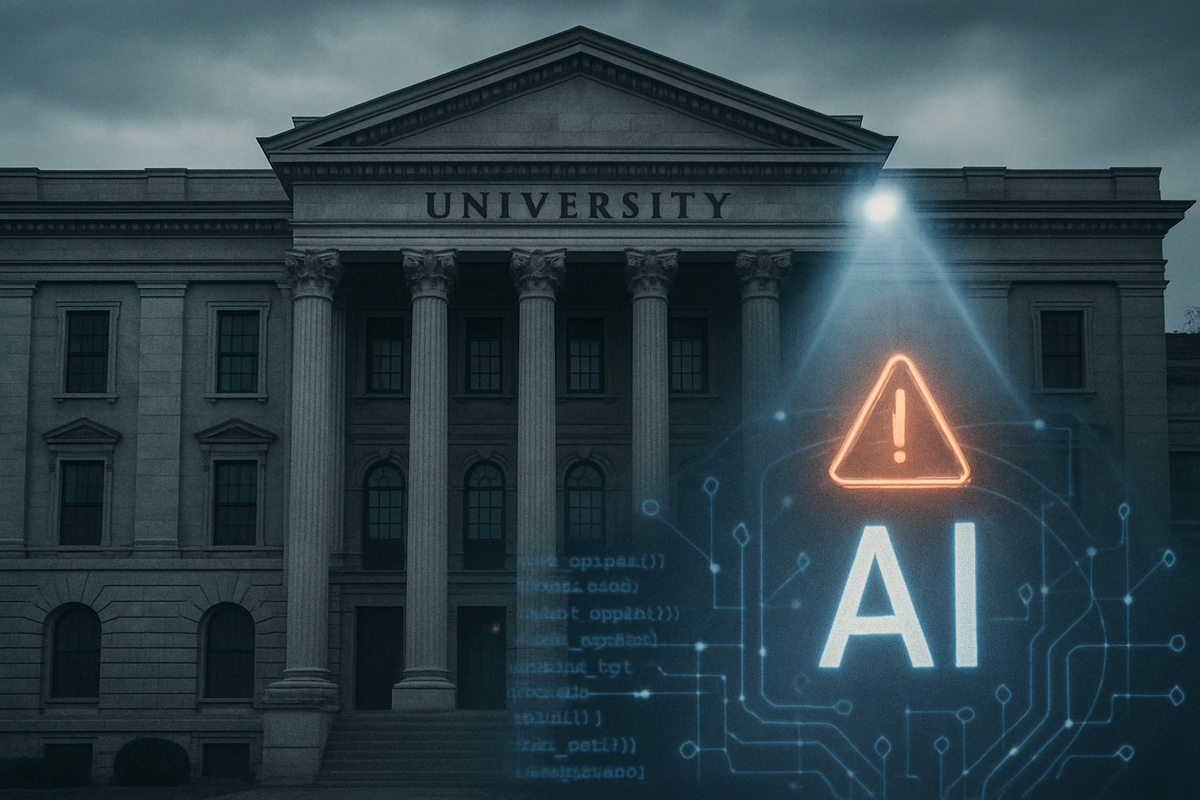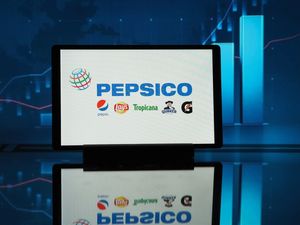
The University of Peshawar's Media Cell is currently facing intense public criticism after it published an unedited news article that was entirely generated by artificial intelligence. This incident, involving content created by Grade 17 and 18 officers, has sparked widespread outrage, highlighting a concerning lapse in editorial oversight and raising significant questions about the institution's content management standards and its reliance on AI for official communications. The controversy serves as a stark reminder of the ethical challenges and the critical need for human review in the age of increasingly sophisticated AI-driven content creation.
A Blunder in the Digital Age: Unpacking the Peshawar University AI Scandal
The core of the controversy centers on an unedited news article, created using an AI-powered language model like ChatGPT, which was posted by the University of Peshawar's Media Cell. The content, devoid of any human review or modification, was published by senior officers, drawing immediate and strong condemnation from students, faculty members, and media professionals alike. Critics universally labeled the publication a "shameful lapse" for an institution that prides itself on academic excellence, pointing to a worrying dependence on artificial intelligence for official communication and a complete absence of human judgment in the process.
While the exact topic of the AI-generated article remains unspecified in reports, its identifiable AI origin and the lack of human intervention quickly became the central point of contention. The incident, reported around October 10, 2025, rapidly garnered attention, leading to widespread "outrage." Key players involved include the University of Peshawar Media Cell, directly responsible for the publication, and the Grade 17 and 18 officers who authored and posted the content. The academic community and media professionals have been vocal stakeholders, emphasizing the irony of a media department, tasked with promoting ethical reporting, blindly relying on an AI-generated piece. The initial reactions were overwhelmingly negative, with calls for accountability and stricter editorial controls to ensure the responsible use of technology in official communications.
Market Implications: Navigating the AI Content Minefield
The University of Peshawar's AI article controversy, while specific to an academic institution, sends ripple effects across industries, particularly for companies involved in AI content generation, educational technology (EdTech), and traditional media. Such an event underscores the critical importance of ethical AI deployment and human oversight, influencing reputation, adoption rates, and market perception.
Companies specializing in AI content generation face a dual challenge. On one hand, the incident highlights the potential for misuse, reinforcing public skepticism about AI-generated content's authenticity and accuracy. This could lead to a negative association, eroding trust and potentially damaging brand perception, especially for newer firms trying to establish credibility. On the other hand, it could spur demand for AI tools with robust transparency features, ethical safeguards, and clear human-in-the-loop verification processes. Providers of AI writing tools will face increased scrutiny regarding the originality and ethical sourcing of their generated content, potentially slowing adoption rates in sectors wary of academic dishonesty or misinformation.
For EdTech companies, the controversy demands a re-evaluation of how AI is integrated into learning platforms. EdTech firms that incorporate AI content generation features could face reputational damage if their tools are implicated in academic misconduct, leading to hesitation from schools and universities. The market will likely shift towards demanding EdTech solutions that prioritize academic integrity, offering strong plagiarism detection, content authenticity verification, and ethical use guidelines. This could also create opportunities for companies developing AI detection tools, as institutions seek ways to identify AI-generated assignments.
Traditional media outlets may find their value proposition reinforced by such controversies. If AI content highlights flaws like misinformation or lack of nuance, it could bolster the reputation of human-driven journalism, fact-checking, and editorial oversight. However, traditional media companies that adopt AI without proper disclosure or rigorous fact-checking could also suffer significant reputational damage. The incident emphasizes the need for media organizations to clearly distinguish between AI as an assistive tool for journalists and AI that generates content, to maintain reader trust and credibility in an increasingly AI-saturated information landscape.
Wider Significance: AI's Ethical Crossroads in Academia and Media
The University of Peshawar's AI article controversy resonates deeply with broader industry trends concerning the integration of artificial intelligence into media and academia, signaling an ethical crossroads that demands immediate attention. This incident is not an isolated event but rather a symptom of the ongoing struggle to balance technological innovation with the fundamental principles of intellectual integrity and credible information dissemination.
In media, the drive for efficiency and scale has pushed for automated content generation, from routine news reports to personalized content. However, this has ignited debates about authorship, copyright, and the potential for job displacement. The Peshawar incident underscores the public's and industry's challenges in trusting AI-generated content, particularly if it lacks accuracy or originality. It intensifies calls for transparency regarding AI's role in content creation and fuels discussions about whether AI should be a creative companion or a replacement for human endeavor.
Within academia, the proliferation of generative AI tools like ChatGPT has created unprecedented challenges for academic integrity. While AI can assist with research and drafting, it also raises concerns about "credibility illusion" and "implicit plagiarism," where AI-generated content may appear plausible but be factually incorrect or lack true originality. This controversy serves as a "wake-up call" for academic institutions globally, highlighting the difficulty in identifying AI-generated work and the potential erosion of critical thinking skills among students who over-rely on AI.
The ripple effects extend to other academic institutions, which may face pressure to update their AI usage policies and assessment methods. Technology partners and AI developers will see increased demand for robust AI detection and attribution tools, potentially prompting them to integrate transparency features like watermarking. Regulatory bodies are also likely to accelerate calls for clearer policy frameworks for AI in both education and media, addressing authorship, copyright, data privacy, and algorithmic biases. Historically, similar "panics" have accompanied the introduction of calculators and the internet, each prompting a re-evaluation of pedagogical approaches and academic integrity. Like these precedents, the AI challenge necessitates adapting, not banning, the technology, by developing ethical guidelines and fostering AI literacy.
The Road Ahead: Adapting to an AI-Driven Future
The University of Peshawar's AI article controversy marks a pivotal moment, prompting a critical examination of how academic institutions and the broader media landscape will adapt to an increasingly AI-driven future. The path forward will necessitate both short-term adjustments and long-term strategic pivots to navigate the ethical and practical challenges posed by generative AI.
In the short term, universities facing similar incidents will likely undergo immediate reputational damage and increased scrutiny, leading to urgent reviews and updates of academic integrity policies to explicitly address AI tool usage. There will be a surge in demand for AI content detection software, despite its current limitations, and a critical need for faculty training to ethically integrate AI into coursework and adapt assessment methods. Student awareness campaigns will also be crucial to educate on responsible AI use.
Looking to the long term, the implications are more profound. Universities will need to redefine academic integrity and authorship, establishing new ethical frameworks that distinguish between AI as an assistive tool and AI as a complete content generator. Curriculum redesign will emphasize higher-order thinking, and AI literacy will become a core skill across all disciplines. Research practices will evolve with AI assistance, but stringent guidelines for transparency and human vetting will be paramount. Educators may transition to roles as facilitators and mentors, designing AI-enhanced learning experiences. The digital divide and data privacy concerns will also demand robust policy solutions.
Strategic pivots for universities and the industry include developing clear ethical frameworks for AI use, investing heavily in AI literacy and training for both faculty and students, and redefining assessment methods to be AI-resistant or constructively leverage AI. Fostering human-AI collaboration and forging industry-academia partnerships will be crucial. For AI content creation and EdTech companies, market opportunities abound in personalized learning platforms, AI-powered assessment tools, and ethical generative AI for content creation with strong safeguards. However, challenges include ensuring ethical AI development, maintaining content quality and accuracy, overcoming teacher resistance, and navigating the evolving regulatory landscape while preventing over-reliance on AI that could diminish critical thinking.
A New Era of Accountability: The Lasting Impact of AI in Content Creation
The University of Peshawar's AI article controversy serves as a powerful "wake-up call" for academic institutions and media organizations globally, underscoring the non-negotiable importance of human oversight and ethical considerations in the rapidly evolving landscape of AI-driven content creation. This incident, while specific, encapsulates the broader challenges and opportunities that define the current intersection of artificial intelligence, education, and journalism.
The key takeaway is clear: while AI offers immense potential for efficiency and innovation, it cannot replace human judgment, critical thinking, and ethical responsibility. The complete absence of human editing led to a significant loss of credibility, highlighting the enduring value of authenticity and verified information. This event accelerates the need for robust institutional policies, comprehensive ethical frameworks, and advanced AI literacy across all stakeholders to ensure that AI serves as an augmentative tool rather than a substitute for intellectual engagement.
Moving forward, the market for AI in education and media is poised for substantial growth, with projections indicating billions in market value over the coming years. However, this growth will be increasingly shaped by a focus on ethical AI solutions, transparency, and accountability. Companies that prioritize building AI systems with strong safeguards against plagiarism, misinformation, and bias will gain a competitive edge. The future will likely see a hybrid "AI with Humans" approach, where technology supports and enhances processes, but human critical thinking and ethical responsibility remain paramount.
The lasting impact of such controversies will be a more concerted global effort to develop and implement clear guidelines for AI usage, redefine academic integrity in the digital age, and foster a culture of responsible AI adoption. It emphasizes that the integration of AI is not merely a technological challenge but a profound ethical and pedagogical one that requires continuous dialogue and adaptation.
Investors in the coming months should closely monitor companies that offer ethical AI solutions, including advanced plagiarism and deepfake detection, and those demonstrating a strong commitment to transparency and compliance. Opportunities will be significant in adaptive learning and personalization platforms, AI-driven content creation tools with built-in safeguards, and AI for administrative efficiency in education. Strategic partnerships between media firms, educational institutions, and AI tech providers will be crucial. Ultimately, the market will favor innovators who can help navigate the complex ethical landscape, ensuring that AI enhances human capabilities and upholds the integrity of information and education.
This content is intended for informational purposes only and is not financial advice





